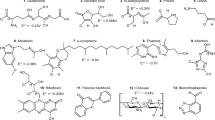Abstract
Resource availability, degree of herbivore damage, genetic variability, and their interactions influence the allocation of investment by plants to resistance and tolerance traits. We evaluated the independent and interactive effects of soil nutrients and moisture, and simulated the effects of herbivore damage on condensed tannins (resistance) and growth/regrowth (tolerance) traits of Terminalia sericea, a deciduous tree in the Kalahari desert that constitutes a major component of livestock diet. We used a completely crossed randomized-block design experiment to examine the effects of nutrients, water availability, and herbivore damage on regrowth and resistance traits of T. sericea seedlings. Plant height, number of branches, internode length, leaf area, leaf mass for each seedling, combined weight of stems and twigs, and root mass were recorded. Condensed tannin concentrations were 22.5 and 21.5% higher under low nutrients and low soil moisture than under high nutrient and high water treatment levels. Tannin concentrations did not differ significantly between control and experimental seedlings 2 mo after simulated herbivore damage. Tannin concentrations correlated more strongly with growth traits under low- than under high-nutrient conditions. No trade-offs were detected among individual growth traits, nor between growth traits and condensed tannins. T. sericea appeared to invest more in both resistance and regrowth traits when grown under low-nutrient conditions. Investment in the resistance trait (condensed tannin) under high-nutrient conditions was minimal and, to a lesser degree, correlated with plant growth. These results suggest that T. sericea displays both resistance and tolerance strategies, and that the degree to which each is expressed is resource-dependent.



Similar content being viewed by others
References
Bazzaz, F. A., Chiariello, N. R., Coley, P. D., and Pitelka, L. F. 1987. Allocating resources to reproduction and defense. BioScience 37:58–67.
Bergelson, J. and Purrington, C. B. 1996. Surveying patterns in the cost of resistance in plants. Am. Nat. 148:536–558.
Coley, P. D., Bryant, J. P., and Chapin, F. S. III 1985. Resource availability and plant antiherbivore defence. Science 230:895–899.
Cooper, S. M. and Owen-Smith, N. 1985. Condensed tannins deter feeding by browsing ruminants in a South African savanna. Oecologia 67:142–146.
Du Toit, J. T. 1995. Determinants of the composition and distribution of wildlife communities in southern Africa. Ambio 24:2–7.
Gebauer, R. L. E., Strain, B. R., and Reynolds, J. 1998. The effect of elevated CO2 and N availability on tissue concentrations and whole plant pools of carbon-based secondary compounds in loblolly pine (Pinus taeda). Oecologia 113:29–36.
Hagerman, A. E. and Butler, L. G. 1989. Choosing appropriate methods and standards for assaying tannin. J. Chem. Ecol. 15:1795–1810.
Herms, D. A. and Mattson, W. J. 1992. The dilemma of plants: to grow or defend. Q. Rev. Biol. 67:283–335.
Hochwender, C. G., Marquis, R. J., and Stowe, K. A. 2000. The potential for and constraints on the evolution of compensatory ability in Asclepias syriaca. Oecologia 122:361–370.
Katjiua, M. L. J. and Ward, D. 2006. Cattle diet selection during the hot-dry season in a semi-arid region of Namibia. Afr. J. Range and Forage Sci. 23:59–67.
Koricheva, J., Larsson, S., Haukioja, E., and Keinänen, M. 1998. Regulation of woody plant secondary metabolism by resource availability: hypothesis testing by means of meta-analysis. Oikos 83:212–226.
Kouki, M. and Manetas, Y. 2002. Resource availability affects differentially the levels of gallotannins and condensed tannins in Ceratonia siliqua. Biochem. Syst. Ecol. 30:631–639.
Larcher, W. 1995. Physiological Plant Ecology: Ecophysiology and Stress Physiology of Functional Groups, 3rd ed. Springer-Verlag, Berlin.
Luxmore, R. J. 1991. A source-sink framework for coupling water, carbon and nutrient dynamics of vegetation. Tree Physiol. 9:267–280.
Mauricio, R. 2000. Natural selection and the joint evolution of tolerance and resistance as plant defenses. Evol. Ecol. 14:491–507.
Mendelsohn, J., Jarvis, A., Roberts, C., and Robertson, T. 2002. Atlas of Namibia: A Portrait of the Land and Its People. David Philip Publishers, Cape Town.
Mutikainen, P., Walls, M., Ovaska, Keinanen, M., Julkunen-Tiitto, R., and Vapaavuori, E. 2000. Herbivore resistance in Betula pendula: effect of fertilization, defoliation, and plant genotype. Ecology 81:49–65.
Osier, T. L. and Lindroth, R. L. 2001. Effects of genotype, nutrient availability, and defoliation on aspen phytochemistry and insect performance. J. Chem. Ecol. 27:1289–1313.
Pilson, D. 2000. The evolution of plant response to herbivory: simultaneously considering resistance and tolerance in Brassica rapae. Evol. Ecol. 14:457–489.
Ruiz, N., Ward, D., and Saltz, D. 2002. Responses of Pancratium sickenbergeri to simulated bulb herbivory: combining defence and tolerance strategies. J. Ecol. 90:472–479.
Simms, E. L. 2000. Defining tolerance as a norm of reaction. Evol. Ecol. 14:563–570.
Stamp, N. 2003. Out of the quagmire of plant defense hypotheses. Q. Rev. Biol. 78:23–55.
Stowe, K. A., Marquis, R. J., Hochwender, C. G., and Simms, E. L. 2000. The evolutionary ecology of tolerance to consumer damage. Annu. Rev. Ecol. Syst. 31:565–595.
Tilman, D. 1988. Plant Strategies and the Dynamics and Structure of Plant Communities. Princeton University Press, Princeton, NJ.
Tuomi, J. 1992. Toward integration of plant defence theories. Trends Ecol. Evol. 7:365–367.
Underwood, N. 1999. The influence of plant and herbivore characteristics on the interaction between induced resistance and herbivore population dynamics. Am. Nat. 153:282–294.
Van der Meijden, E., Wijn, M., and Verkaar, H. J. 1988. Defence and regrowth, alternative plant strategies in the struggle against herbivores. Oikos 51:355–363.
Ward, D. and Young, T. P. 2002. Effects of large mammalian herbivores and ant symbionts on condensed tannins of Acacia drepanolobium in Kenya. J. Chem. Ecol. 28:921–937.
Waterman, P. G. and Mole, S. 1994. Analysis of Phenolic Plant Metabolites. Blackwell, Oxford.
Zar, J. H. 1984. Biostatistical Analysis. Prentice-Hall, Englewood Cliffs, NJ.
Acknowledgments
This research was supported by the Ministry of Environment and Tourism (Namibia) and the National Research Foundation of South Africa (to DW). We thank Jakobus M.T. Theron for technical assistance. Ester Lusepani-Kamwi and Andries Ughwanga provided invaluable assistance at the Okahandja Forestry Research Station. Thanks to Michael Undi for comments on the manuscript.
Author information
Authors and Affiliations
Corresponding author
Rights and permissions
About this article
Cite this article
Katjiua, M.L.J., Ward, D. Resistance and Tolerance of Terminalia sericea Trees to Simulated Herbivore Damage Under Different Soil Nutrient and Moisture Conditions. J Chem Ecol 32, 1431–1443 (2006). https://doi.org/10.1007/s10886-006-9060-9
Received:
Revised:
Accepted:
Published:
Issue Date:
DOI: https://doi.org/10.1007/s10886-006-9060-9




